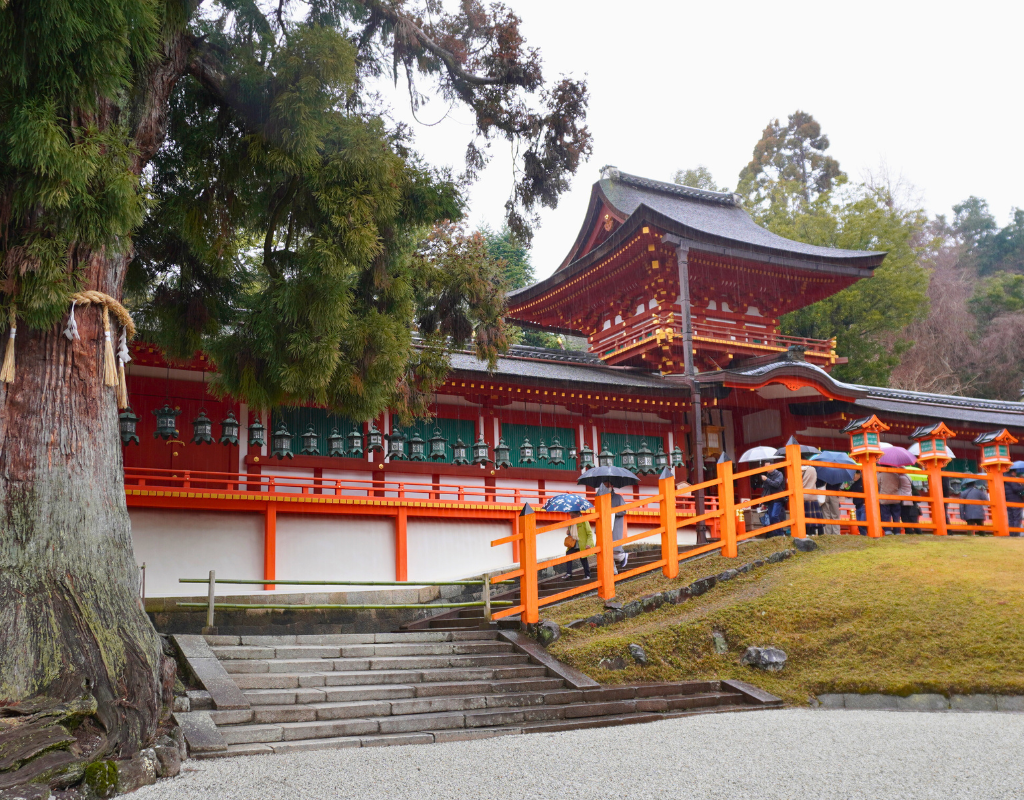- May 23, 2025
- No Comments
Nara Prefecture is home to more World Heritage sites than anywhere else in Japan, making it a must-visit for anyone interested in history and culture. Once the nation’s capital from 710 to 784, Nara City—then known as Heijo-kyo—was a vibrant center of politics and culture. Among its many historic landmarks, Kasuga Taisha stands out for its deep cultural significance. This iconic shrine is part of Nara’s World Heritage sites and houses an extraordinary collection of treasures, including 354 national treasures and over 2,500 important cultural properties.
Table of Contents
History of Kasuga Taisha
Kasuga Taisha has a rich history dating back about 1,300 years to the early Nara period. Established on Mount Mikasa, 283 meters above sea level, it served as the guardian shrine for Heijo-kyo, Japan’s ancient capital. Originally dedicated to Takemikazuchi-no-Mikoto, the ancestral deity of the influential Fujiwara clan, the shrine was expanded in 768 by order of Emperor Shoutoku. The main hall was then rebuilt to enshrine four deities—Takemikazuchi-no-Mikoto, Futsunushi-no-Mikoto, Amenokoyane-no-Mikoto, and Himegami—symbolizing prayers for national prosperity and public well-being.
Today, Kasuga Taisha remains an active spiritual center, hosting over 2,200 festivals each year. One of the most significant is the Kasuga Festival, held annually on March 13. This historic event includes the ceremonial presentation of an imperial decree by an envoy from the Imperial Palace—a tradition that has continued for more than 1,200 years in hope of peace and prosperity for the nation.
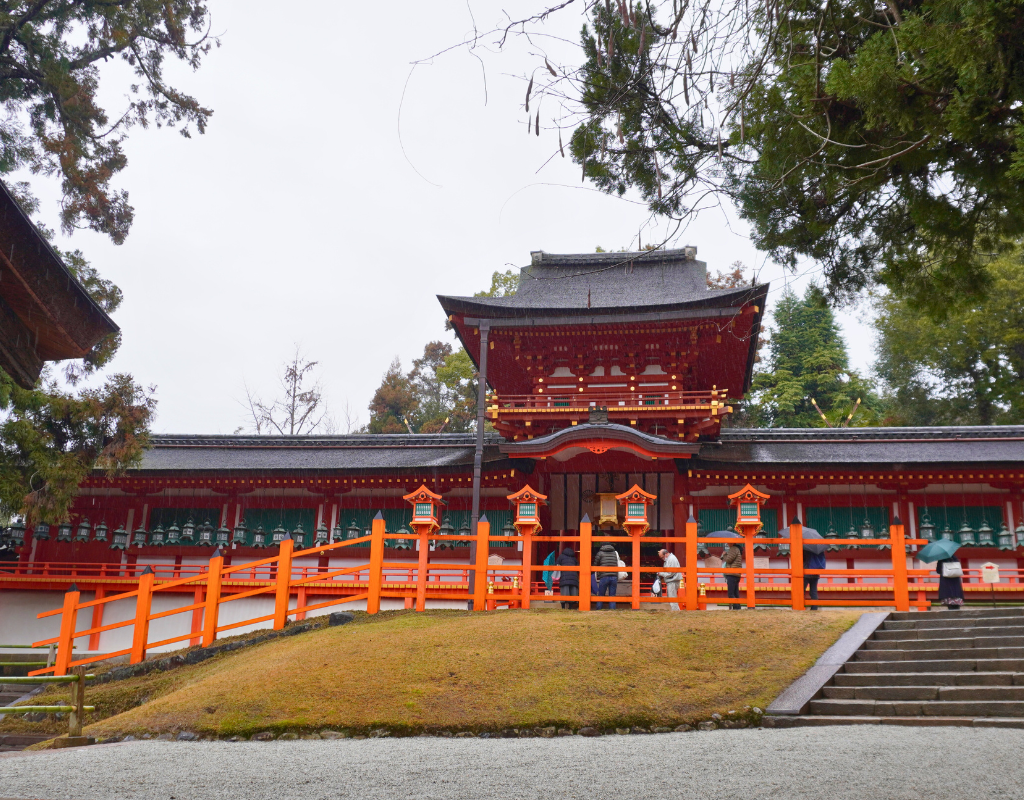
The Lanterns and Sacred Forest of Kasuga Taisha
When you visit Kasuga Taisha, you’ll notice many stone lanterns. Almost 70% of Japan’s Muromachi period lanterns are here, with about 3,000 lanterns donated since the Heian period. These lanterns are only lit on the day of Setsubun, August 14th and 15th. During the Mantoro festival, they’re lit to pray for people’s wishes. In the past, oil was offered, and the lanterns were lit every night as long as the oil lasted. Now, you can see their beauty anytime by visiting the Fujinami-no-ya Hall. If you want to know what the Setsubun is, please refer to the article below.
When you look up at the main hall, you’ll notice the striking contrast between the green forest and the vermilion-painted shrine. The primeval forest of Mount Kasuga has been a special natural monument for over a thousand years, with hunting and logging prohibited in the sacred precincts of Kasuga Taisha. This forest, closely linked to the shrine and its beliefs, is a UNESCO World Heritage Site. Among this protected area, you’ll find many deer, protected as messengers of the gods since ancient times when the gods were said to ride white deer to Mount Mikasa. These deer, a national natural treasure, number around 1,300 today.
Related Post
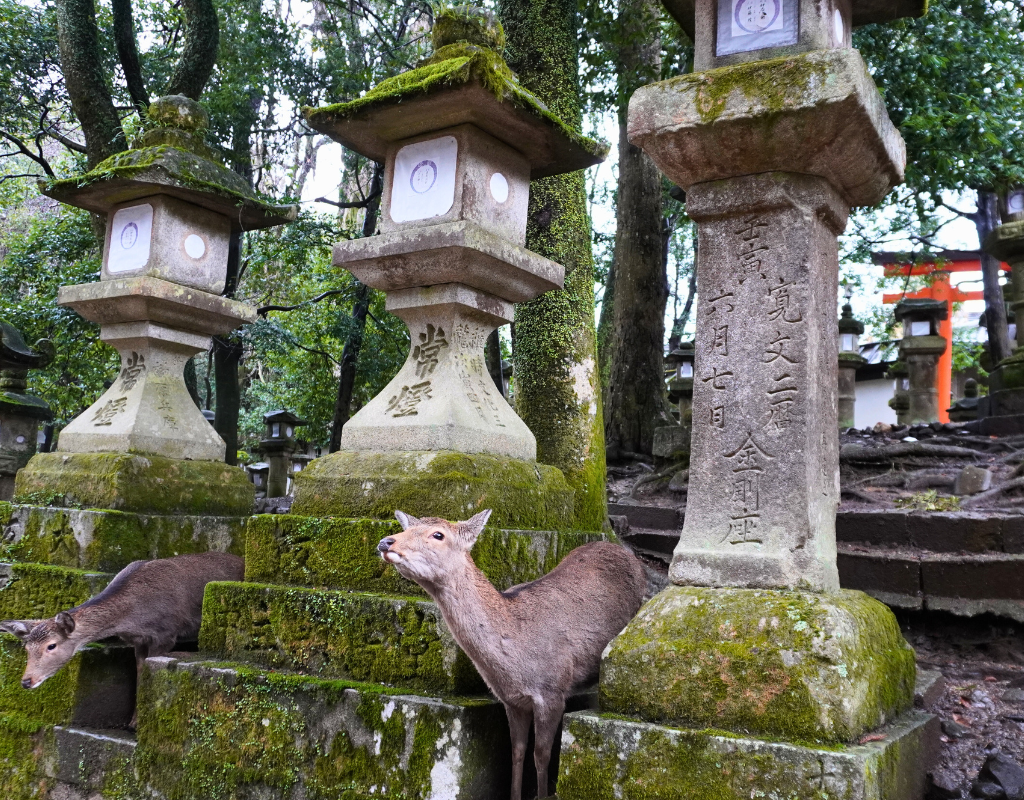
Not a tourist spot, but a realm of the gods
Despite the passage of time, the sacred deities and the primeval forest of Kasuga Taisha have been carefully preserved through deep-rooted faith. Even today, visitors honor this tradition by respecting the shrine’s spiritual atmosphere. When visiting Kasuga Taisha, it’s important to observe proper etiquette and follow the rules within the sacred grounds. Please review the following guidelines to ensure a respectful and meaningful visit.
Etiquette at Kasuga Taisha
- As you pass through the second torii gate, you’ll find a purification area. Here, you can ritually cleanse your hands and mouth with water before visiting the shrines.
- After that, you’ll visit the Haraed Shrine immediately to your left. This shrine is dedicated to a deity who purifies sins and impurities, preparing your mind and body before visiting the main hall.
- At Kasuga Taisha, there is a worship hall in front of the main hall where you can pray for free. If you are wearing a hat, please remove it before entering the hall. Inside the hall, there is a large wooden box called a “saisenbako” or offering box, where you can place money as an offering. Offering money is a way to express your heart and wishes to the gods, so quietly place your money into the box. Of course, this box is also sacred, so avoid throwing money or placing objects on top of it.
- Next is the “ni-rei ni-hakushi ichi-rei” (two bows, two claps, one bow) ritual. When visiting a shrine, there is a specific etiquette called “ni-rei ni-hakushi ichi-rei.” First, bow deeply twice to show respect and gratitude to the gods. Then, clap your hands twice, and quietly make your prayer. Finally, bow deeply once more to express gratitude to the gods.
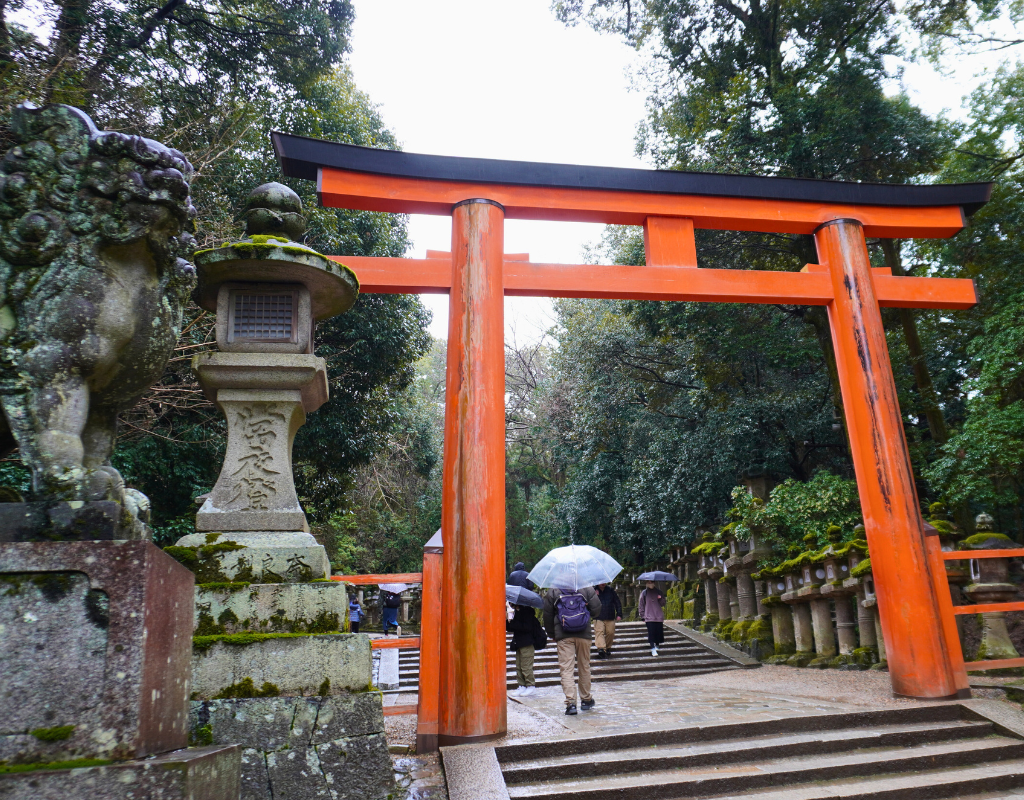
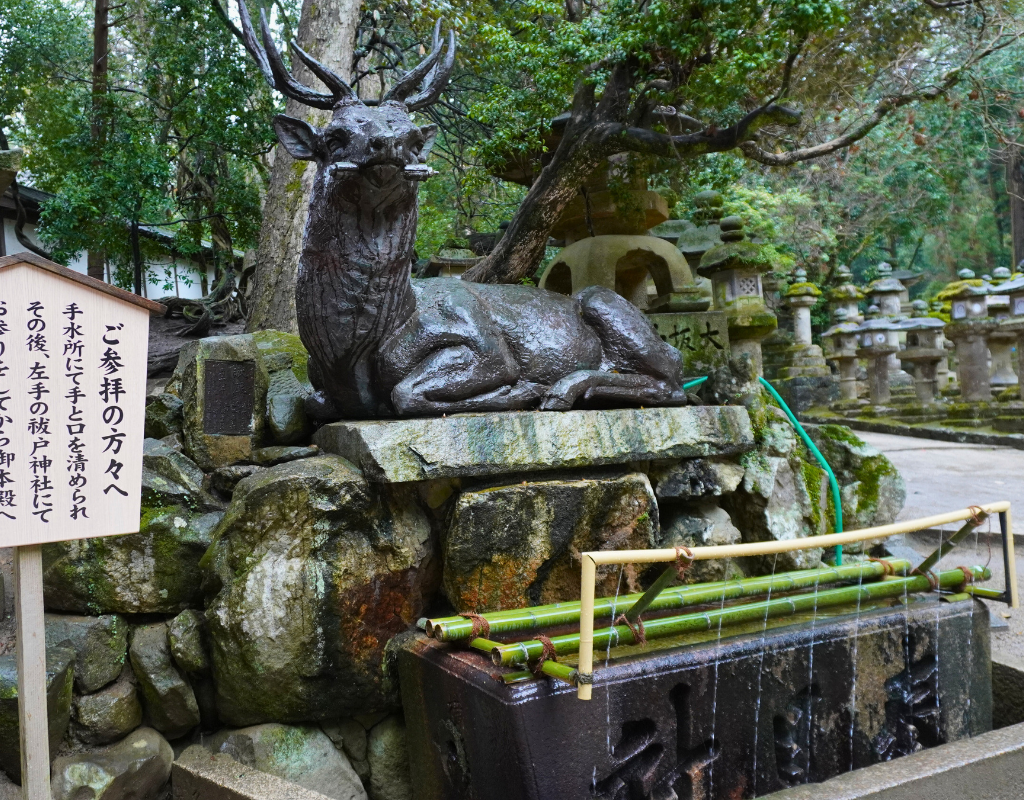
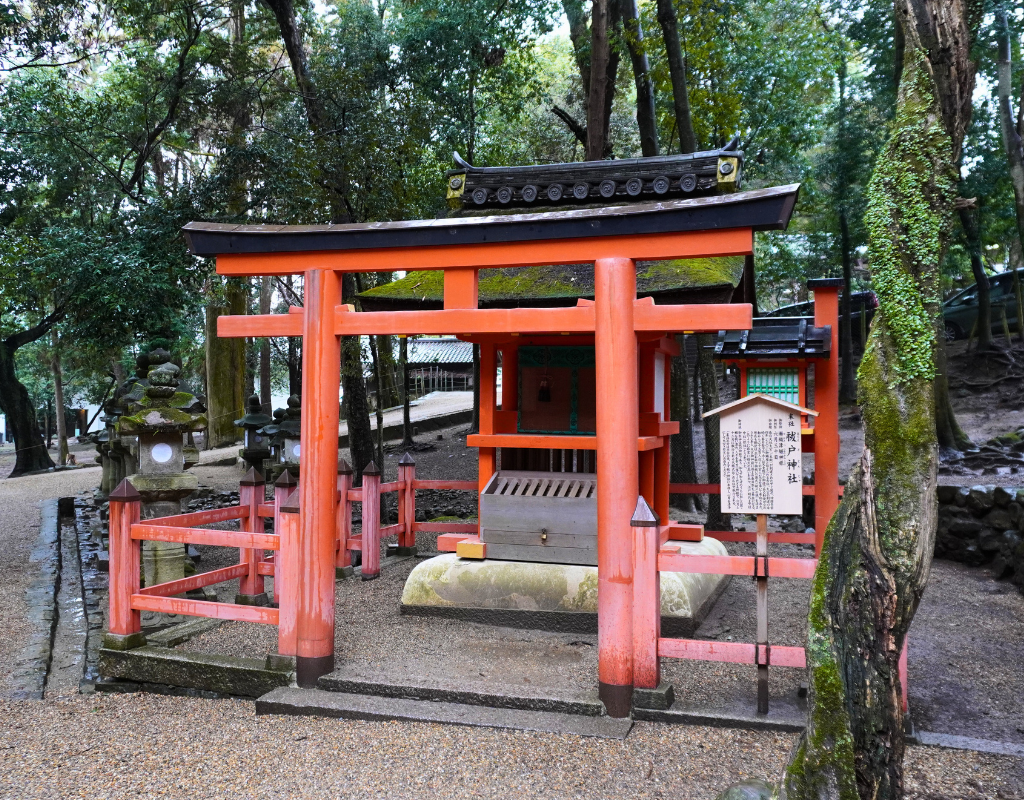
It’s important to remember that shrines are places for the gods. Therefore, sitting or smoking on the stone steps or approaching paths is considered disrespectful and against etiquette. Additionally, in recent years, more people have been feeding deer foods other than deer crackers that are sold. Since deer are wild animals, it’s best not to offer them human food and instead observe them from a distance.
There may be many etiquette rules that surprise visitors, but we believe that etiquette reflects the culture of a country. We hope you can enrich your stay in Japan by learning about its culture, and enjoying the 1,300-year history of Kasuga Taisha.
Further Details
- Further Details: View Website
- Address: 160 Kasugano-cho Nara-shi, Japan (Access)
General Worship of Main Sanctuary: April – September: 6:00 – 18:00, October – March: 6:30 – 17:00 (View Website)

